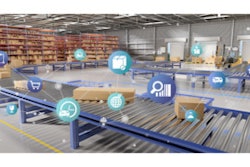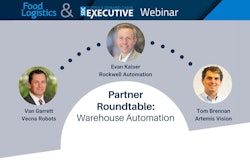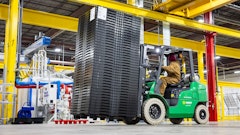
Every year, approximately one-third of the food humans produce around the world is wasted. In fact, according to the United Nations’ Food and Agriculture Organization, more than 1.3 billion tons of food intended for human consumption every year is wasted.
That represents more than $900 billion in losses and is more than twice as impactful in developed countries than developing nations. Most of this loss is due to inefficiencies and gaps in the supply chain and logistics process. As per a report by Future Market Insights, 85-95% of overall food wasted in the developing economies is from supply chain, including manufacturer waste.
For CPOs and supply chain professionals in the food industry that deal in products with limited longevity and specific environmental requirements, waste reduction and increased efficiency is only becoming more important.
Intelligent packaging market overview
The intelligent packaging market revenue totaled $17.8 billion in 2020, according to Future Market Insights. The overall market is expected to reach $46.7 billion by 2031, expanding at a CAGR of 9.0% for 2021-31.
Worldwide sales of intelligent packaging is expected to grow by 10.5% in 2022. Surging demand for interactive packaging/data carriers will remain a chief growth driver over coming years.
The global intelligent packaging market constituted around 2% of the $900 billion worth of global packaging market and is estimated to be above 5% by the end of 2030.
What exactly can businesses achieve with intelligent packaging for supply chain efficiency?
Reduced order picking and customs inspection times. Intelligent packaging can be programmed to store a variety of information, including the type and quantity of products packed in a plastic stackable container or on a plastic pallet. By pointing a reading device to the packaging materials, warehouse workers can quickly identify the products they need for order picking.
In a similar manner, customs inspectors can check the contents of a loaded truck and quickly compare them with the readings from the handheld devices pointed at the intelligent packaging.
Ensure proper transport and storage conditions for sensitive merchandise. Intelligent packaging can be used to monitor temperature, humidity, tilt and other critical factors for the safety of special products, such as food.
The sensors embedded in the packaging can give real-time and en-route readings, so that the purchaser can check whether the specified shipping conditions were met.
Real-time monitoring of merchandise in transit. Merchandise theft and loss are still major issues for the global supply chain. With intelligent packaging, both the purchaser and the seller can monitor the journey of the merchandise and receive real-time readings from various checkpoints along the route.
Offer detailed product information to customers. QR codes are already the norm in most retail stores. Customers point their smartphones and get all the information they need. But, sticker QR codes may fall off and printed ones may fade. With intelligent packaging, this type of code would be a part of the crate or container itself. While this solution is mostly keeping in mind the customers, however channel partners throughout the supply chain benefit from data transparency it offers
Here are some of the trends projected for intelligent packaging in the coming years:
Increased focus on technology standardization. As intelligent packaging is relatively new technology, there is a lack of a single standard around which the solutions are built. The most forward-looking manufacturers and technology companies will work with standard agencies to ensure they work towards any standards that are being developed. This ensures that the information that is reported back to manufacturers from different sources can be reconciled and consolidated in the same manner.
Cost of intelligent packaging will go down. As with any new technology that is yet to mature, the prices of the technology will drop significantly over the next few years. While the price of intelligent packaging has already gone down over the past years, a further price reduction will make intelligent packaging accessible for most manufacturers.
Adaptable packaging technologies. Each manufacturer and their products are different and manufacturers will put a lot of emphasis on working with solutions providers that are willing to work with them to provide a solution that solves their specific issues. An off-the-shelf solution will not cut it anymore in the future.
Big data and data visualization. The rise of the amount of data coming from intelligent packaging will see a need for solution providers to visualize this big data so that manufacturers can easily interpret the data. Expect a rise in the hiring of data scientists by manufacturers to utilize the big data coming from intelligent packaging, so that supply chain processes can be optimized, such as through predictive planning and better inventory management.
Focus on one complete solution. The current intelligent packaging solutions are provided by separate solutions providers and can generally be divided by anti-counterfeit/theft solutions, traceability solutions and solutions focusing on end-customer engagement. Brands will increasingly want to work with providers that can deliver a total intelligent packaging solution rather than a solution that focuses on one of the three areas.
Next steps
Intelligent packaging has great potential for improving supply chain effectiveness and efficiency. There are many applications that could improve customer satisfaction; increase visibility; improve security and reliability of supply; prevent product diversion, counterfeit, and theft; and reduce product wastage.
Integrating intelligent packaging solutions into the existing end-to-end supply chain could help companies increase sales by improving customer satisfaction and loyalty and reduce expenses by improving key processes, reducing theft and managing waste.
However, the supply chain industry must overcome some significant obstacles to the implementation of intelligent packaging, such as high mass production costs, the complexity of integrating smart devices into current packaging lines and concerns about security, data privacy and sustainability.
In some cases, advanced manufacturing technologies, such as roll-to-roll printing and the implementation of the Internet of Things and blockchain may hold the answer to these problems. But, in order to address and resolve all of the fundamental issues related to implementing intelligent packaging, cross-collaboration among every node in the industrial supply chain is needed.
Experts in manufacturing, analytical science, predictive models, data analytics, criminology and business are needed to define a systematic approach for the integration of intelligent packaging solutions into the supply chain.
Furthermore, both academia and industry need to work together to understand all of the tactical and operational parts of the supply chain that will be impacted by this new technology in the long term. Organizations and research institutes could strive to bridge the gap between academia and industries.
In the end, companies will need an integrated systems approach that will help them understand packaging trends and adapt their packaging and supply chain to meet changing demands.




















